Intro
The gallbladder is a small, pear-shaped organ located under the liver that plays a crucial role in digesting fats and fat-soluble vitamins. However, sometimes the gallbladder can become diseased or inflamed, requiring surgical removal, also known as a cholecystectomy. If you're one of the many people who have undergone gallbladder removal surgery, you're likely eager to learn about the healing process and how to ensure a smooth recovery. In this article, we'll delve into the world of gallbladder removal healing, exploring the importance of proper care and providing 7 valuable tips to aid in your recovery.
Gallbladder removal surgery is a common procedure that can be performed using open surgery or laparoscopic methods. While the surgery itself is relatively straightforward, the recovery process can be challenging, especially in the first few weeks. It's essential to follow a healthy diet, manage your pain effectively, and avoid strenuous activities to promote healing and prevent complications. By taking the right steps, you can minimize your risk of developing post-operative problems and get back to your normal routine sooner.
The healing process after gallbladder removal surgery typically takes several weeks to a few months. During this time, it's crucial to prioritize your health and well-being by making informed lifestyle choices. A well-balanced diet, regular exercise, and adequate rest can all contribute to a speedy recovery. Additionally, being aware of potential complications, such as infection, bleeding, or bowel obstruction, can help you seek medical attention promptly if you experience any unusual symptoms. By being proactive and taking control of your recovery, you can reduce your risk of developing long-term health problems and improve your overall quality of life.
Understanding the Gallbladder Removal Healing Process
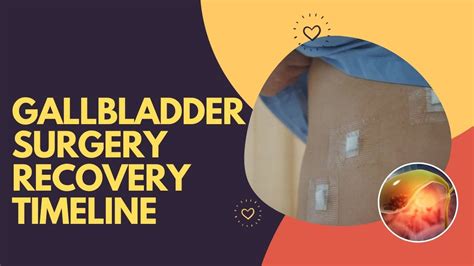
Importance of Proper Care
Proper care is vital during the gallbladder removal healing process. This includes following your doctor's instructions, taking your medications as prescribed, and attending follow-up appointments. Additionally, maintaining a healthy lifestyle, including a balanced diet, regular exercise, and adequate rest, can help promote healing and prevent complications. By prioritizing your health and well-being, you can reduce your risk of developing long-term health problems and improve your overall quality of life.7 Tips for Gallbladder Removal Healing
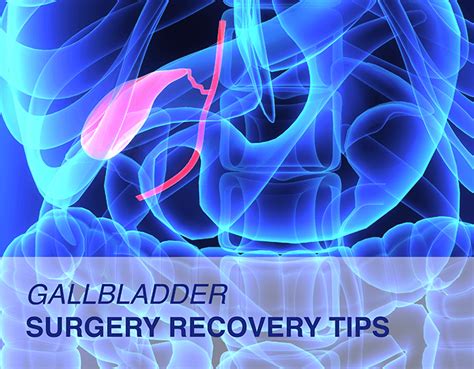
- Follow a healthy diet: Eating a balanced diet rich in fruits, vegetables, whole grains, and lean proteins can help promote healing and prevent complications. Avoid fatty, greasy, or spicy foods that can irritate your digestive system.
- Stay hydrated: Drinking plenty of water and other fluids can help flush out your system and promote healing. Aim to drink at least 8-10 glasses of water per day.
- Manage your pain: Follow your doctor's instructions for managing your pain, and take your medications as prescribed. You can also try using relaxation techniques, such as deep breathing or meditation, to help manage your discomfort.
- Get plenty of rest: Adequate rest is essential for promoting healing and preventing complications. Aim to get at least 7-8 hours of sleep per night and take regular breaks during the day to rest and relax.
- Avoid strenuous activities: Avoid strenuous activities, such as heavy lifting, bending, or exercise, for at least 4-6 weeks after surgery. This can help prevent complications, such as bowel obstruction or hernia.
- Attend follow-up appointments: Attending follow-up appointments with your doctor is crucial for monitoring your progress and preventing complications. Be sure to ask any questions or concerns you may have during these appointments.
- Seek support: Having a support system in place can be incredibly helpful during the recovery process. Reach out to friends, family, or support groups for emotional support and guidance.
Additional Tips for a Smooth Recovery
In addition to the 7 tips above, here are some additional tips to aid in your gallbladder removal healing:- Avoid smoking and limit your alcohol intake, as these can irritate your digestive system and slow down the healing process.
- Take your medications as prescribed, and be sure to finish the full course of antibiotics to prevent infection.
- Keep your wound clean and dry, and change your dressings as instructed by your doctor.
- Avoid driving or operating heavy machinery until you're feeling comfortable and able to respond quickly.
Common Complications and How to Prevent Them
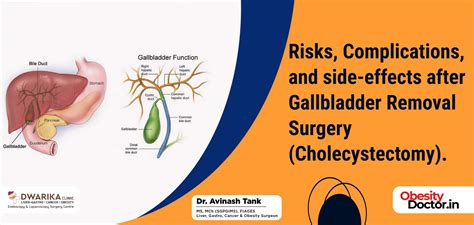
Signs and Symptoms of Complications
If you experience any of the following signs or symptoms, seek medical attention immediately:- Fever or chills
- Severe abdominal pain or tenderness
- Nausea or vomiting
- Blood in your stool or vomit
- Difficulty breathing or shortness of breath
- Chest pain or palpitations
Long-Term Effects of Gallbladder Removal
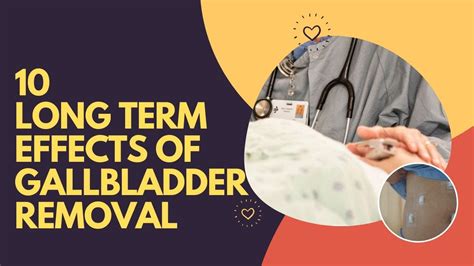
Dietary Changes After Gallbladder Removal
After gallbladder removal surgery, you may need to make some dietary changes to ensure proper digestion and prevent complications. These include:- Eating smaller, more frequent meals
- Avoiding fatty, greasy, or spicy foods
- Increasing your fiber intake to prevent constipation
- Staying hydrated by drinking plenty of water and other fluids
Conclusion and Next Steps
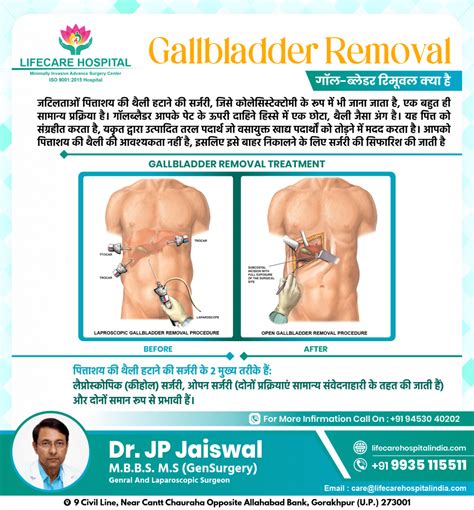
If you have any questions or concerns about your gallbladder removal healing, be sure to reach out to your doctor or healthcare provider. They can provide personalized guidance and support to help you navigate the recovery process and achieve a smooth and successful outcome.
What are the most common complications after gallbladder removal surgery?
+The most common complications after gallbladder removal surgery include infection, bleeding, bowel obstruction, and hernia. It's essential to follow your doctor's instructions and attend follow-up appointments to prevent these complications.
How long does it take to recover from gallbladder removal surgery?
+The recovery time for gallbladder removal surgery typically takes several weeks to a few months. It's essential to follow your doctor's instructions, attend follow-up appointments, and prioritize your health and well-being during the recovery process.
What dietary changes should I make after gallbladder removal surgery?
+After gallbladder removal surgery, you may need to make some dietary changes to ensure proper digestion and prevent complications. These include eating smaller, more frequent meals, avoiding fatty, greasy, or spicy foods, and increasing your fiber intake to prevent constipation.
We hope this article has provided you with valuable insights and information to aid in your gallbladder removal healing. Remember to stay informed, prioritize your health and well-being, and seek medical attention promptly if you experience any unusual symptoms. By taking control of your recovery, you can minimize your risk of developing long-term health problems and improve your overall quality of life. Share your thoughts and experiences in the comments below, and don't hesitate to reach out if you have any questions or concerns.
